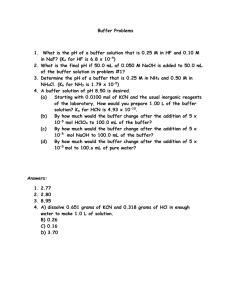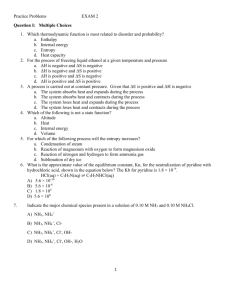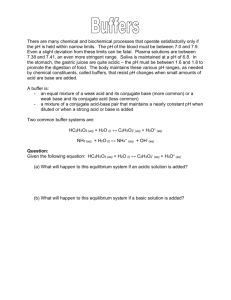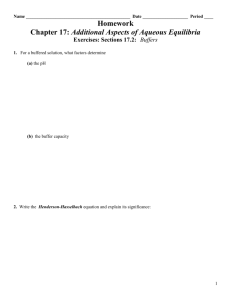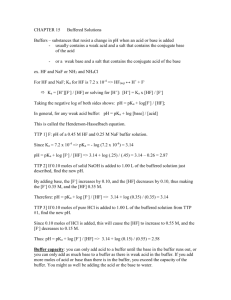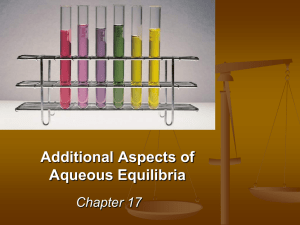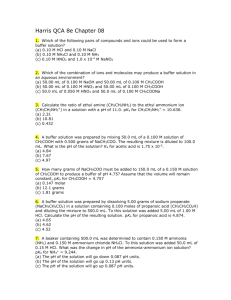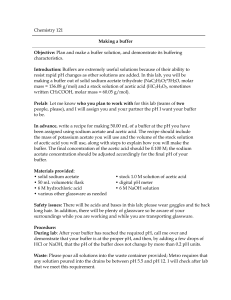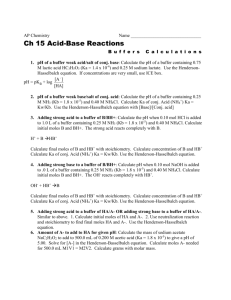l3buffer - chemicalminds
advertisement
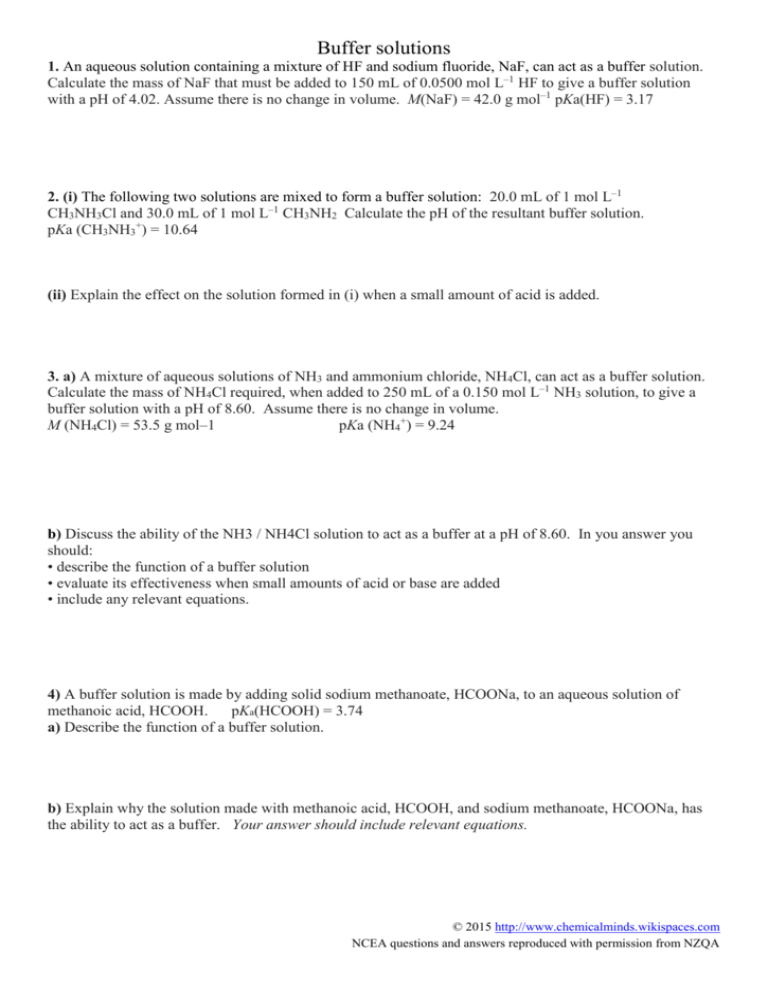
Buffer solutions 1. An aqueous solution containing a mixture of HF and sodium fluoride, NaF, can act as a buffer solution. Calculate the mass of NaF that must be added to 150 mL of 0.0500 mol L–1 HF to give a buffer solution with a pH of 4.02. Assume there is no change in volume. M(NaF) = 42.0 g mol–1 pKa(HF) = 3.17 2. (i) The following two solutions are mixed to form a buffer solution: 20.0 mL of 1 mol L–1 CH3NH3Cl and 30.0 mL of 1 mol L–1 CH3NH2 Calculate the pH of the resultant buffer solution. pKa (CH3NH3+) = 10.64 (ii) Explain the effect on the solution formed in (i) when a small amount of acid is added. 3. a) A mixture of aqueous solutions of NH3 and ammonium chloride, NH4Cl, can act as a buffer solution. Calculate the mass of NH4Cl required, when added to 250 mL of a 0.150 mol L–1 NH3 solution, to give a buffer solution with a pH of 8.60. Assume there is no change in volume. M (NH4Cl) = 53.5 g mol–1 pKa (NH4+) = 9.24 b) Discuss the ability of the NH3 / NH4Cl solution to act as a buffer at a pH of 8.60. In you answer you should: • describe the function of a buffer solution • evaluate its effectiveness when small amounts of acid or base are added • include any relevant equations. 4) A buffer solution is made by adding solid sodium methanoate, HCOONa, to an aqueous solution of methanoic acid, HCOOH. pKa(HCOOH) = 3.74 a) Describe the function of a buffer solution. b) Explain why the solution made with methanoic acid, HCOOH, and sodium methanoate, HCOONa, has the ability to act as a buffer. Your answer should include relevant equations. © 2015 http://www.chemicalminds.wikispaces.com NCEA questions and answers reproduced with permission from NZQA

